Mapping Properties of Associate Laguerre Polynomial in Symmetric Domains
Abstract
:1. Introduction
2. A Set of Lemmas
3. Main Results
- where we take . For , is the value the best possible value in Theorem 4? We attempt to explore it by experimenting with a graphical depiction of and . Here, it is important to note that when . We thus make our cases for .
4. Conclusions
Author Contributions
Funding
Data Availability Statement
Conflicts of Interest
References
- Carvajal, M.; Arias, J.M.; Gómez-Camacho, J. Analytic evaluation of Franck-Condon integrals for anharmonic vibrational wave functions. Phys. Rev. A 1999, 59, 3462. [Google Scholar] [CrossRef]
- Chung, Y.S.; Sarkar, T.K.; Jung, B.H.; Salazar-Palma, M.; Ji, Z.; Jang, S.; Kim, K. Solution of time domain electric field integral equation using the Laguerre polynomials. IEEE Trans. Antennas Propag. 2004, 52, 2319–2328. [Google Scholar] [CrossRef]
- Mawhin, J.; Ronveaux, A. Schrödinger and Dirac equations for the hydrogen atom, and Laguerre polynomials. Arch. Hist. Exact Sci. 2010, 64, 429–460. [Google Scholar] [CrossRef]
- Khan, M.K.R. A Study of Laguerre Polynomials and its generalization. Doctoral Dissertation, Aligarh Muslim University, Aligarh, India, 2008. [Google Scholar]
- Ma, W.; Minda, D. A unified treatment of some special classes of univalent functions. In Proceedings of the Conference on Complex Analysis; International Press Inc.: Somerville, MA, USA, 1992; pp. 157–169. [Google Scholar]
- Kanwal, B.; Noor, K.I.; Hussain, S. Properties of Certain Classes of Holomorphic Functions Related to Strongly Janowski Type Function. J. Math. 2021, 2021, 1806174. [Google Scholar] [CrossRef]
- Long, P.; Liu, J.; Gangadharan, M.; Wang, W. Certain subclass of analytic functions based on q-derivative operator associated with the generalized Pascal snail and its applications. AIMS Math. 2022, 7, 13423–13441. [Google Scholar] [CrossRef]
- Srivastava, H.M.; Sabir, P.O.; Eker, S.S.; Wanas, A.K.; Mohammed, P.O.; Chorfi, N.; Baleanu, D. Some m-fold symmetric bi-univalent function classes and their associated Taylor-Maclaurin coefficient bounds. J. Inequalities Appl. 2024, 47, 1–18. [Google Scholar] [CrossRef]
- Gandhi, S. Radius estimates for three leaf function and convex combination of starlike functions. In Mathematical Analysis I: Approximation Theory, Proceedings of the International Conference on Recent Advances in Pure and Applied Mathematics, New Delhi, India, 23–25 October 2018; Springer: Singapore, 2018; pp. 173–184. [Google Scholar]
- Cho, N.E.; Kumar, V.; Kumar, S.S.; Ravichandran, V. Radius problems for starlike functions associated with the sine function. Bull. Iran. Math. Soc. 2019, 45, 213–232. [Google Scholar] [CrossRef]
- Sharma, K.; Jain, N.K.; Ravichandran, V. Starlike functions associated with a cardioid. Afr. Mat. 2016, 27, 923–939. [Google Scholar] [CrossRef]
- Bano, K.; Raza, M. Starlikeness associated with Limacon. Filomat 2023, 37, 851–862. [Google Scholar] [CrossRef]
- Breaz, D.; Panigrahi, T.; El-Deeb, S.M.; Pattnayak, E.; Sivasubramanian, S. Coefficient Bounds for Two Subclasses of Analytic Functions Involving a Limacon-Shaped Domain. Symmetry 2024, 16, 183. [Google Scholar] [CrossRef]
- Saliu, A.; Noor, K.I.; Hussain, S.; Darus, M. Some results for the family of univalent functions related with Limac¸on domain. AIMS Math. 2021, 6, 3410–3431. [Google Scholar] [CrossRef]
- Alahmade, A.; Mujahid, Z.; Tawfiq, F.M.O.; Khan, B.; Khan, N.; Tchier, F. Third Hankel Determinant for Subclasses of Analytic and m-Fold Symmetric Functions Involving Cardioid Domain and Sine Function. Symmetry 2023, 15, 2039. [Google Scholar] [CrossRef]
- Raza, M.; Mushtaq, S.; Malik, S.N.; Sokół, J. Coefficient inequalities for analytic functions associated with cardioid domains. Hacet. J. Math. Stat. 2020, 49, 2017–2027. [Google Scholar] [CrossRef]
- Mondal, S.R. Mapping Properties of Associate Laguerre Polynomials in Leminiscate, Exponential and Nephroid Domain. Symmetry 2022, 14, 2303. [Google Scholar] [CrossRef]
- Miller, S.S.; Mocanu, P.T. Differential Subordinations: Theory and applications, Monographs and Textbooks in Pure and Applied Mathematics 225; CRC Press: Boca Raton, FL, USA, 2000. [Google Scholar]
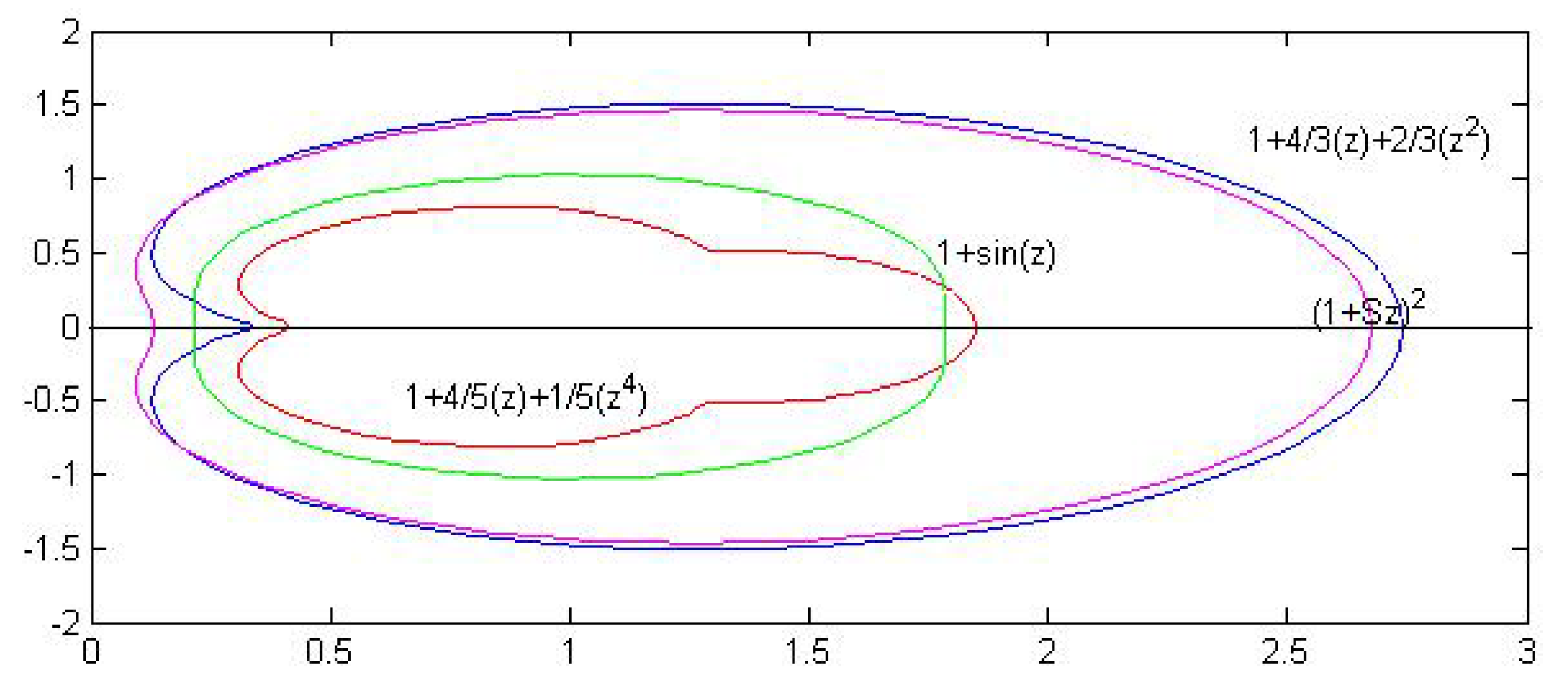
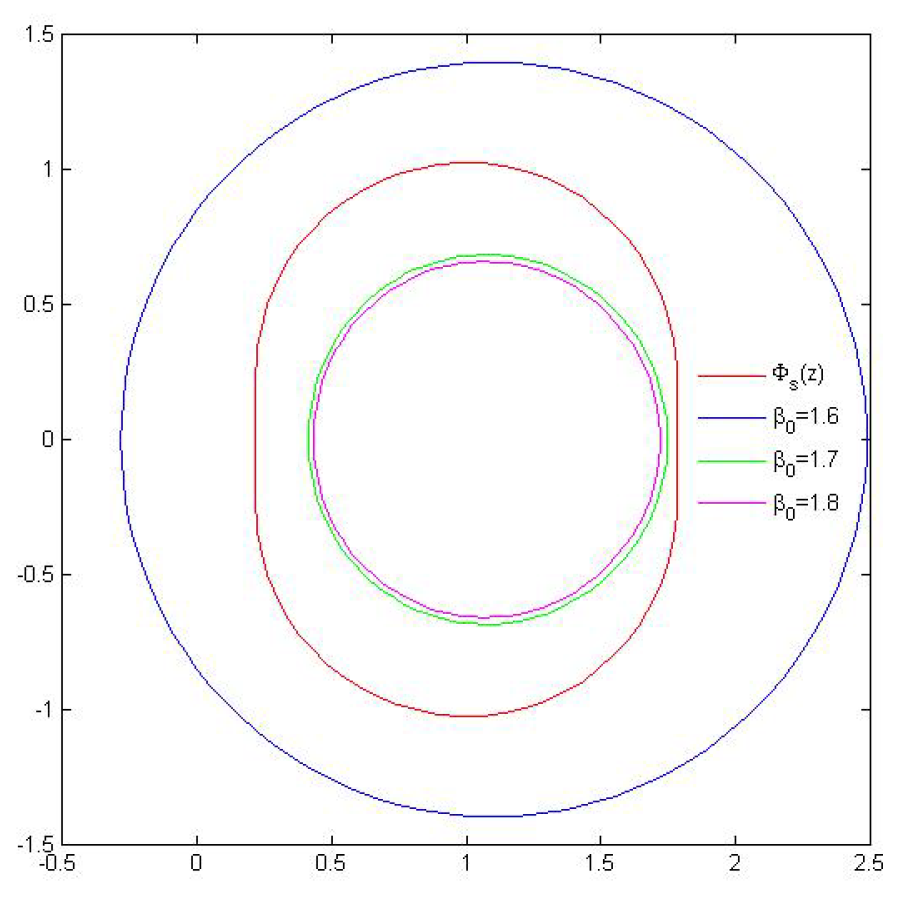
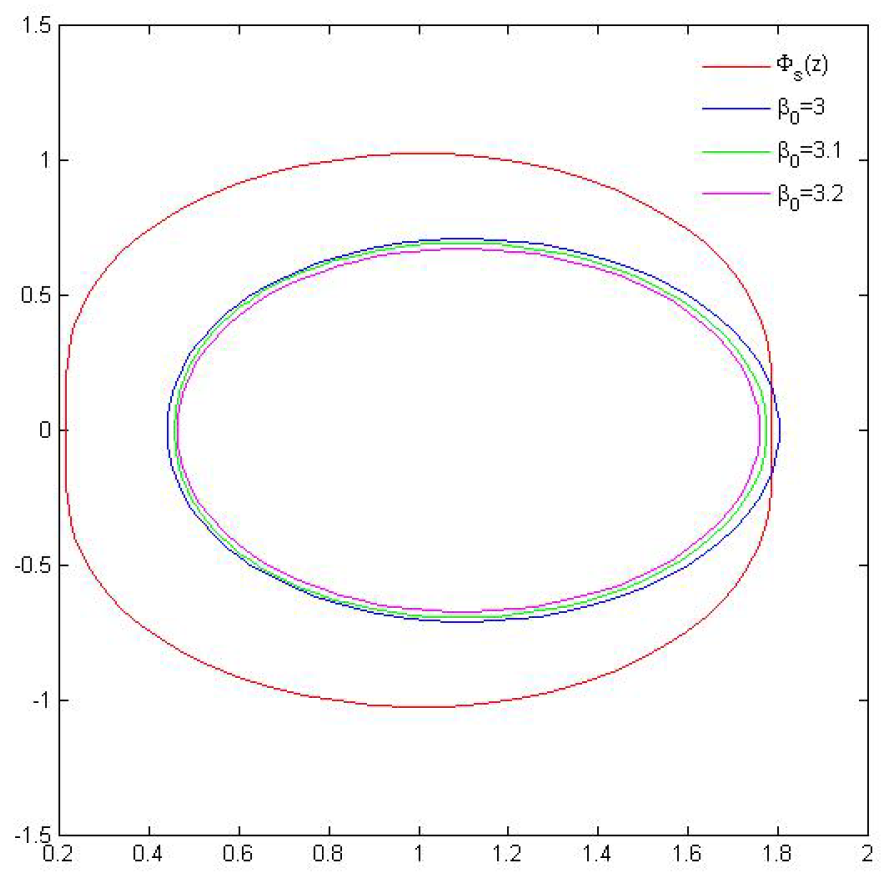
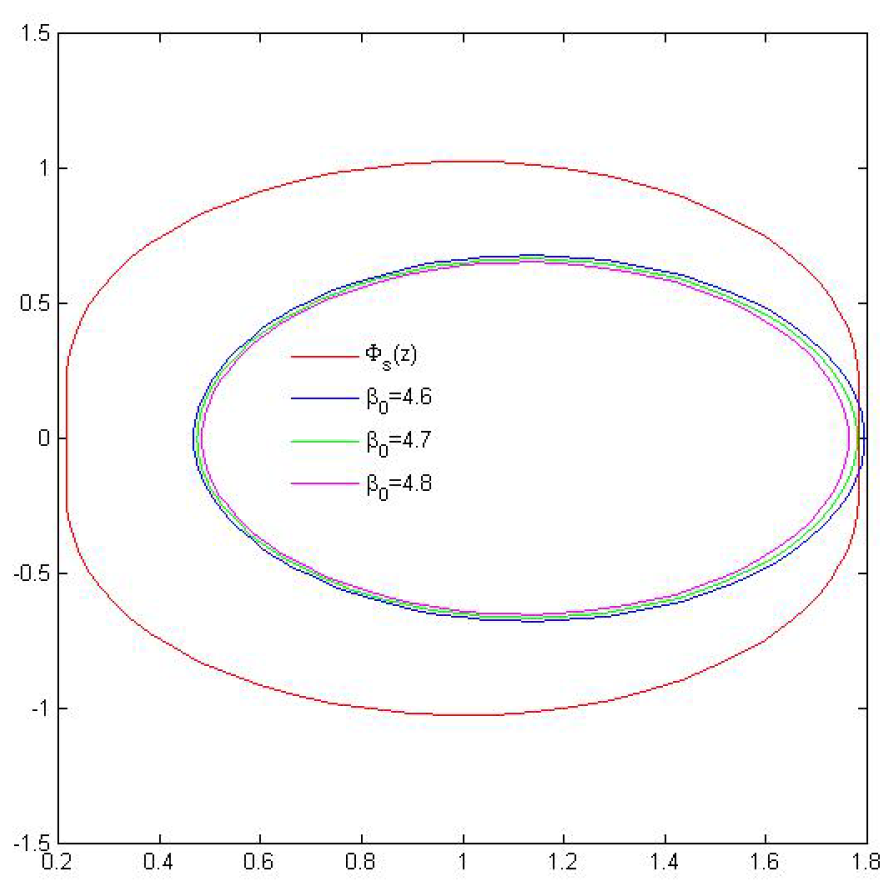
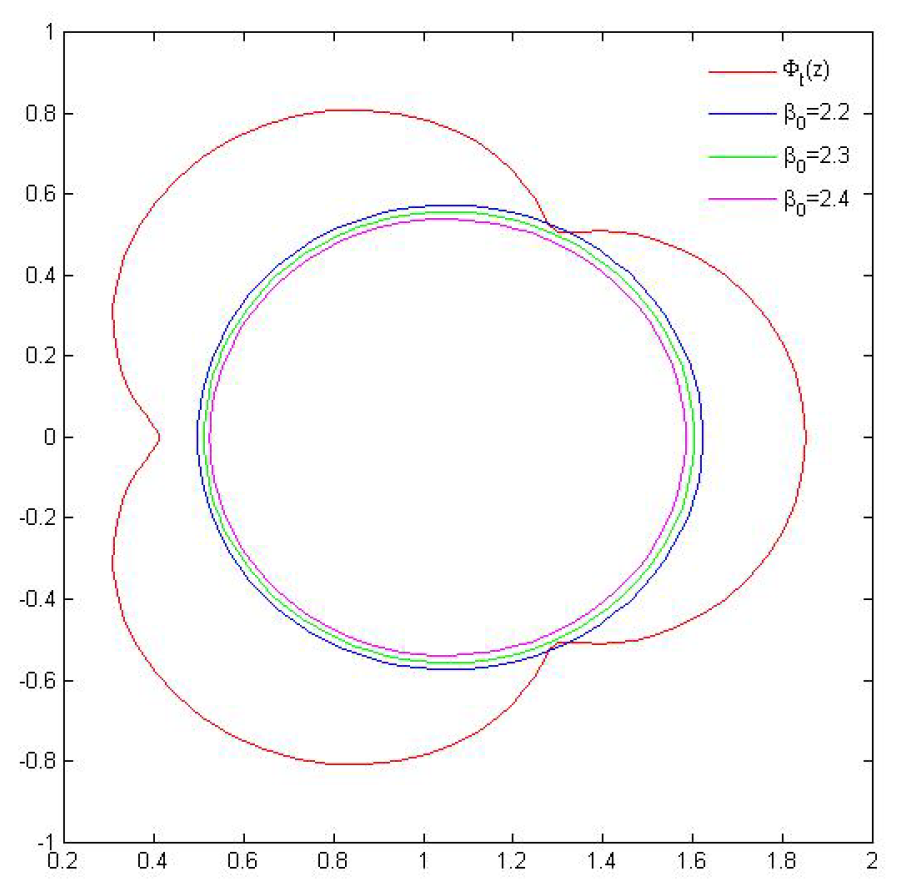





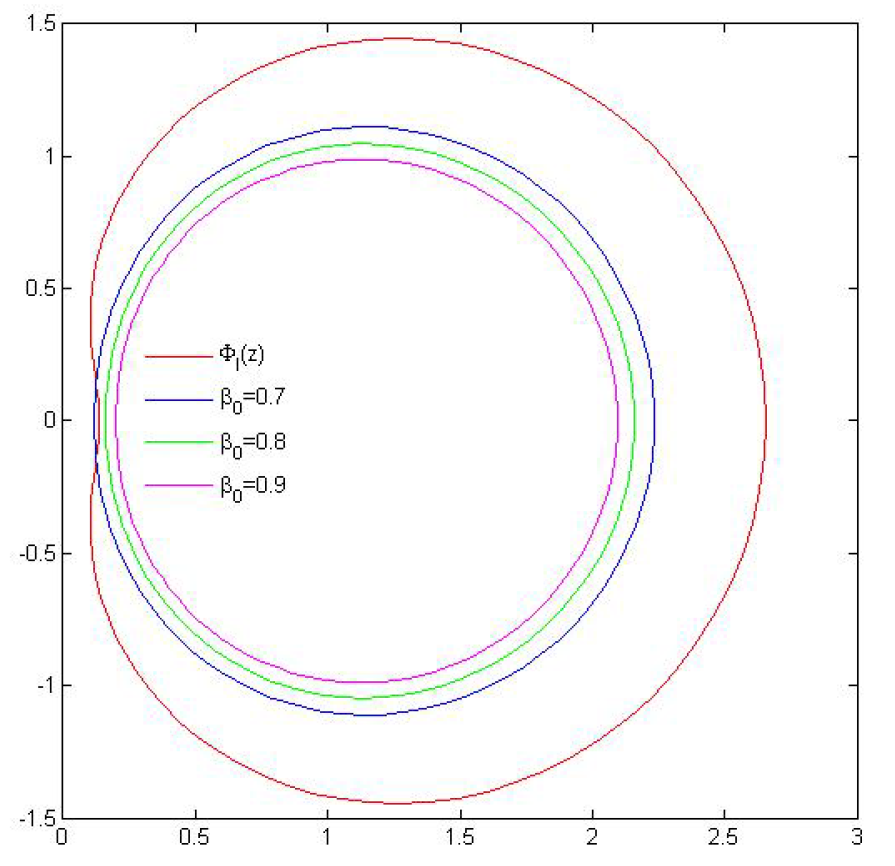
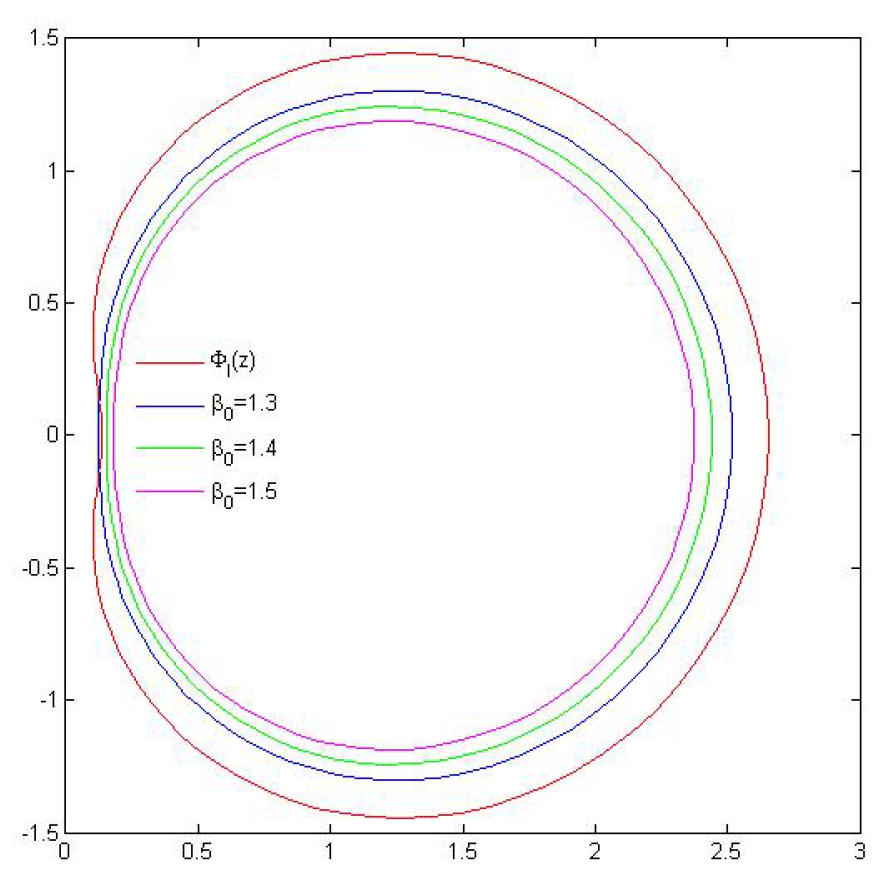
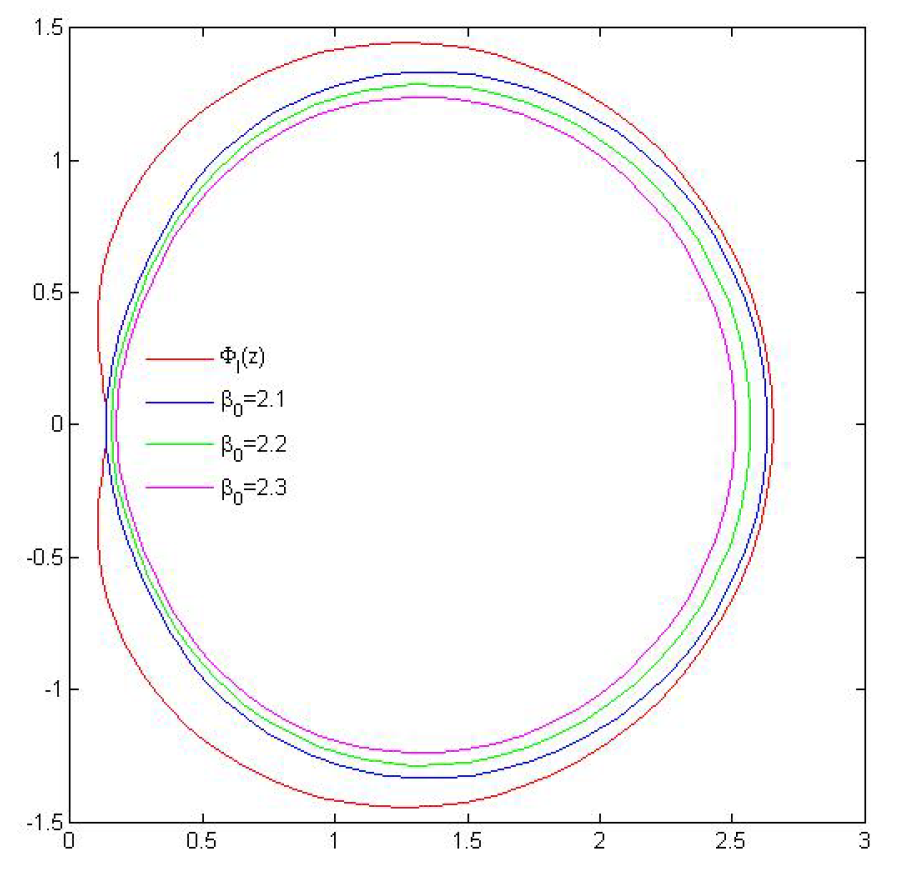
Disclaimer/Publisher’s Note: The statements, opinions and data contained in all publications are solely those of the individual author(s) and contributor(s) and not of MDPI and/or the editor(s). MDPI and/or the editor(s) disclaim responsibility for any injury to people or property resulting from any ideas, methods, instructions or products referred to in the content. |
© 2024 by the authors. Licensee MDPI, Basel, Switzerland. This article is an open access article distributed under the terms and conditions of the Creative Commons Attribution (CC BY) license (https://creativecommons.org/licenses/by/4.0/).
Share and Cite
Al-Sa’di, S.; Siddiqa, A.; Kanwal, B.; Alamri, M.A.; Hussain, S.; Noor, S. Mapping Properties of Associate Laguerre Polynomial in Symmetric Domains. Symmetry 2024, 16, 1545. https://doi.org/10.3390/sym16111545
Al-Sa’di S, Siddiqa A, Kanwal B, Alamri MA, Hussain S, Noor S. Mapping Properties of Associate Laguerre Polynomial in Symmetric Domains. Symmetry. 2024; 16(11):1545. https://doi.org/10.3390/sym16111545
Chicago/Turabian StyleAl-Sa’di, Sa’ud, Ayesha Siddiqa, Bushra Kanwal, Mohammed Ali Alamri, Saqib Hussain, and Saima Noor. 2024. "Mapping Properties of Associate Laguerre Polynomial in Symmetric Domains" Symmetry 16, no. 11: 1545. https://doi.org/10.3390/sym16111545
APA StyleAl-Sa’di, S., Siddiqa, A., Kanwal, B., Alamri, M. A., Hussain, S., & Noor, S. (2024). Mapping Properties of Associate Laguerre Polynomial in Symmetric Domains. Symmetry, 16(11), 1545. https://doi.org/10.3390/sym16111545






